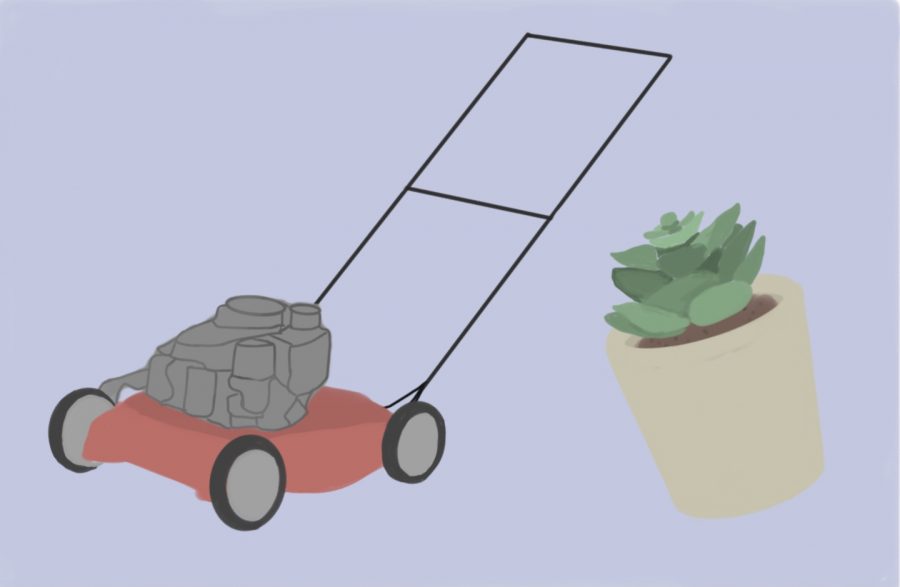Hot Take: Lawns are Fiscally and Symbolically Harmful
Grass lawns’ negative fiscal and symbolic consequences far outweigh their perceived benefits.
October 6, 2020
When I say grass, you probably aren’t thinking of the sturdy Muhlenbergia rigens, the tastefully wispy Nassella, or even the ever-alluring Hierochloe odorata. No, you probably picture trimmed down Kentucky bluegrass, or even worse, transgenic golf course grass (ew).
Whatever you call it, there’s no denying one simple fact: Americans are obsessed with grass. We use 3 trillion gallons of water, 580 million pounds of gas, 168 million pounds of pesticides and herbicides, and 60 billion dollars a year, all to maintain that perfect lawn. That’s enough money annually to end homelessness three times over. And we’re spending it on veritable weeds which destroy biodiversity and run through water far faster than drought-resistant or native plants. Grass has a long and storied history in California, eventually culminating with the lawn archetype that I despise today: a remarkable amalgamation of classism, environmental destruction, and postcolonialist white supremacy.
So why are we so obsessed with our lawns? Once upon a time, the vast majority of interest in the plants surrounding us was both practical and sustainable: Indigenous peoples still use sweetgrass for medicinal and sacred practices, and deergrass makes for a solid base for weaving baskets. So how did we go from practical native plants to European grass becoming not only the most common grass, but the most common irrigated crop in the United States? The answer is simple. Colonization.
The colonists brought over their grasses along with methane-emitting, unsustainably-bred grazing cattle, and that grass eventually evolved into yard decoration, a symbol that proudly displayed the whiteness of its owner. That’s exactly why the lawn as a status symbol as it is today is so destructive: though seemingly innocuous, it is a representation of the destruction of both Indigenous peoples and the environment at large. What was once only propagated by white colonists has evolved into a crucial part of the “American dream” of prosperity today: get your white picket fence, your neatly trimmed lawn, and forget everything else. Forget the environment, the native fauna and flora, and the money that could be spent doing something actually cool like buying a bouncy house or maybe even a smoothie bowl from Vitality.
Long story short. Lawns as we know them suck. They suck up water (and our dollars) like a sponge, and destroy biodiversity wherever they’re planted. It’s time to get some natural ground cover—it’s way prettier anyway.



